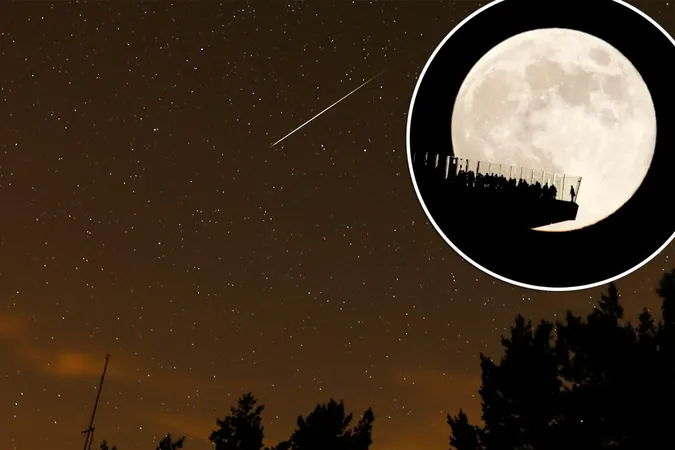
Brace Yourself for 2025: A Year Packed with Meteor Showers, Northern Lights, and Supermoons!
2025-01-02
Author: Ming
As we bid farewell to 2024, get ready to look upward, because 2025 is set to be an astronomical wonder! Following an extraordinary year that showcased a total solar eclipse and stunning auroras, the upcoming year promises even more spectacular celestial events.
Meteor Showers Galore!
January starts off with a bang as the Quadrantids meteor shower lights up the skies. Regarded as one of the most potent meteor showers, its peak visibility is short-lived, lasting only about six hours overnight from January 2nd to January 3rd. To catch a glimpse of this dazzling display, plan for the early predawn hours—just do not blink!
If you miss out on the Quadrantids, fear not! More opportunities await later in the year. Mark your calendars for the Perseids meteor shower, peaking from August 12th to August 13th, known for its bright meteors and warm summer nights. Then, as December rolls around, witness the Geminids meteor shower reach its peak on the nights of December 13th to 14th. Both provide an exhilarating opportunity for stargazers.
Celestial Conjunctions to Watch
As January progresses, the moon will create an exciting event on January 13th by passing in front of Mars, visible for skywatchers across the U.S. and eastern Canada. Additionally, the celestial duo of Venus and Saturn will be in conjunction on January 17th and 18th, appearing remarkably close together—just a couple of finger widths apart!
Throughout January, four planets will take center stage each night: Venus and Saturn setting in the southwest, Jupiter high overhead, and Mars rising in the east. For those with a telescope, Uranus and Neptune are also within reach!
Northern Lights Delight
The Northern Lights will continue to dazzle observers as well, with exciting opportunities popping up early in 2025. Following a meteorological surge caused by coronal mass ejections hitting Earth's magnetic field on New Year’s Eve, aurora sightings are expected as early as January 3rd and 4th. This is an exciting period for aurora hunters!
Prepare for Eclipses
2025 is not short on major eclipses either! A total lunar eclipse will take place on March 14th, though visibility across the U.S. will depend on weather conditions. Another total lunar eclipse will occur later in the year on September 7th, but unfortunately, this event will not be visible in the United States. Mark March 29th for a partial solar eclipse, which can be observed in parts of North America.
While 2024 was noteworthy for its total solar eclipse, the next chance to experience one in the U.S. will not come until August 2044. So don’t miss these moments!
Supermoons Ahead!
October will herald the beginning of a thrilling trio of supermoons! The first of these phenomena will appear, culminating with the largest on December 4th. These moons typically appear larger and brighter, creating breathtaking visuals for anyone looking up.
With an array of remarkable cosmic events scheduled throughout 2025, prepare for an unforgettable year. So grab your telescope and get ready to embrace the magic of the night sky—2025 is your year to shine!

 Brasil (PT)
Brasil (PT)
 Canada (EN)
Canada (EN)
 Chile (ES)
Chile (ES)
 Česko (CS)
Česko (CS)
 대한민국 (KO)
대한민국 (KO)
 España (ES)
España (ES)
 France (FR)
France (FR)
 Hong Kong (EN)
Hong Kong (EN)
 Italia (IT)
Italia (IT)
 日本 (JA)
日本 (JA)
 Magyarország (HU)
Magyarország (HU)
 Norge (NO)
Norge (NO)
 Polska (PL)
Polska (PL)
 Schweiz (DE)
Schweiz (DE)
 Singapore (EN)
Singapore (EN)
 Sverige (SV)
Sverige (SV)
 Suomi (FI)
Suomi (FI)
 Türkiye (TR)
Türkiye (TR)
 الإمارات العربية المتحدة (AR)
الإمارات العربية المتحدة (AR)